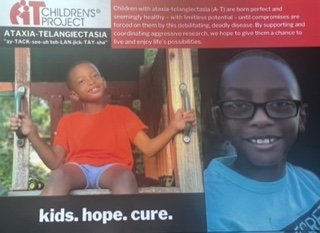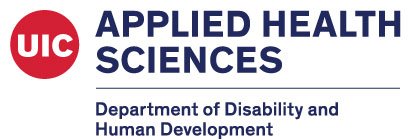By: Madison Turner, LEND PT Trainee
Physical therapy is a profession with a large emphasis on the movement system and physical function. Within the physical therapy realm, disability is defined as “an umbrella term for impairments, activity limitations and participation restrictions. It denotes the negative aspects of the interaction between a person’s health condition(s) and that individual’s contextual factors, environmental and personal factors.” (The ICF: An Overview - Centers for Disease Control and Prevention) This definition implies that any limitations with movement and participation is something that needs to be fixed and corrected during therapy treatment sessions. This language is something that is frequently used when reviewing charts and creating an image of the cases we are exposed to in our classes.
As I attend LEND sessions with self-advocates and family advocates coming to speak to us, I am realizing there needs to be a shift in language and in patient goals when working with patients with disabilities. I feel there is a large emphasis in my field to “fix” any impairments we find or any deviations from a typically functioning or typically developed individual. However, for people with disabilities that receive physical therapy, the reason for those treatment sessions is not always related to their disability and may instead be working to address a more acute injury.
Figure 1. Diagram of the International Classification of Functioning, Disability and Health. (Reference: Rimmer, 2006)
The International Classification of Functioning, Disability and Health (ICF) model is a tool commonly used by physical therapists when considering patient goals and prognosis. This model recognizes several factors that may affect an individual's ability to participate in treatment sessions and their motivation to get better. These factors include body function and structures, activities, and participation, as well as environmental and personal factors (The ICF: An Overview - Centers for Disease Control and Prevention).
This model is a great step to ensuring we take into account several factors before treating patients and determining their goals and prognosis. With that being said, there still seems to be a greater emphasis on the components of body function/structures and activities as those components are where physical therapists are experts. All 5 factors that are needed in this model should be considered when determining patient outcomes and priorities when it comes to creating the patient plan of care. The integration of the participation, environmental, and personal factors may help allow for treatment sessions to be more targeted for all patient populations, but perhaps especially for patients with disabilities as they may not be looking to have their impairments “fixed” but instead returned to their prior level of functioning.
References
The ICF: An overview - centers for disease control and prevention. Accessed September 28, 2023. https://www.cdc.gov/nchs/data/icd/icfoverview_finalforwho10sept.pdf.
Rimmer JH. Use of the ICF in identifying factors that impact participation in physical activity/rehabilitation among people with disabilities. Disability and Rehabilitation. 2006;28(17):1087-1095. doi:10.1080/09638280500493860
World Health Organization. ICF: International Classification of Functioning, Disability and Health. World Health Organization: Geneva; 2002.





















